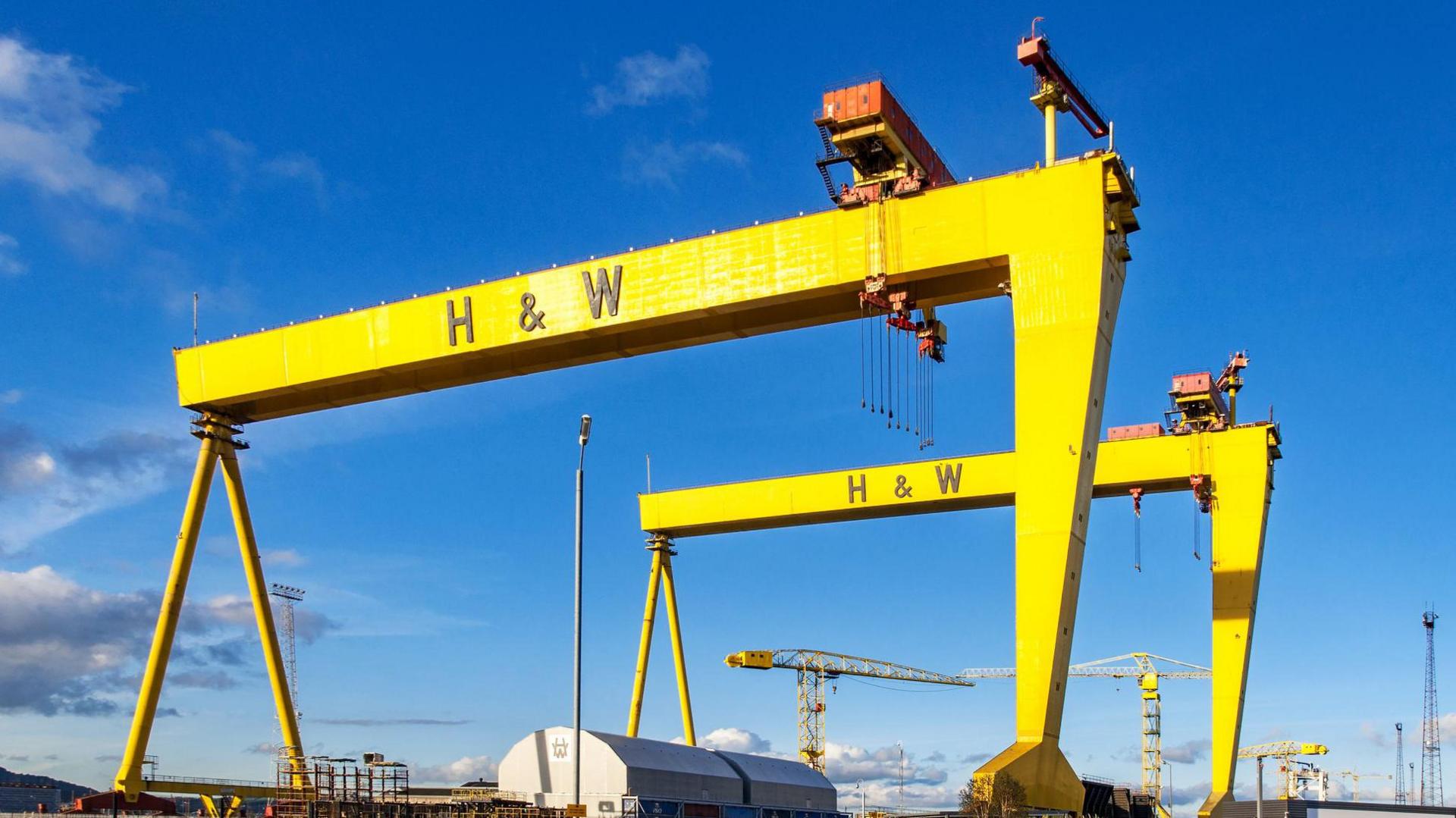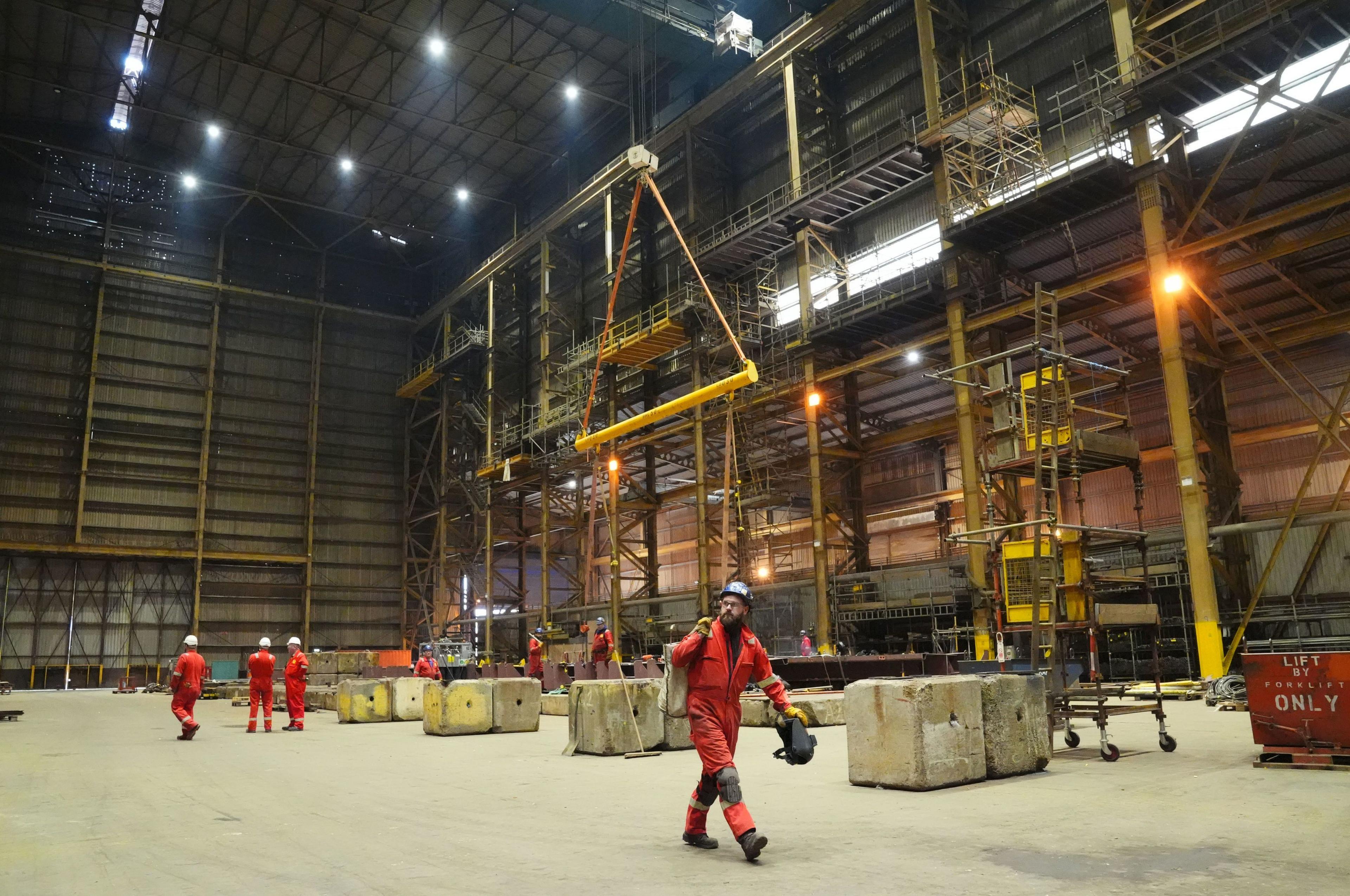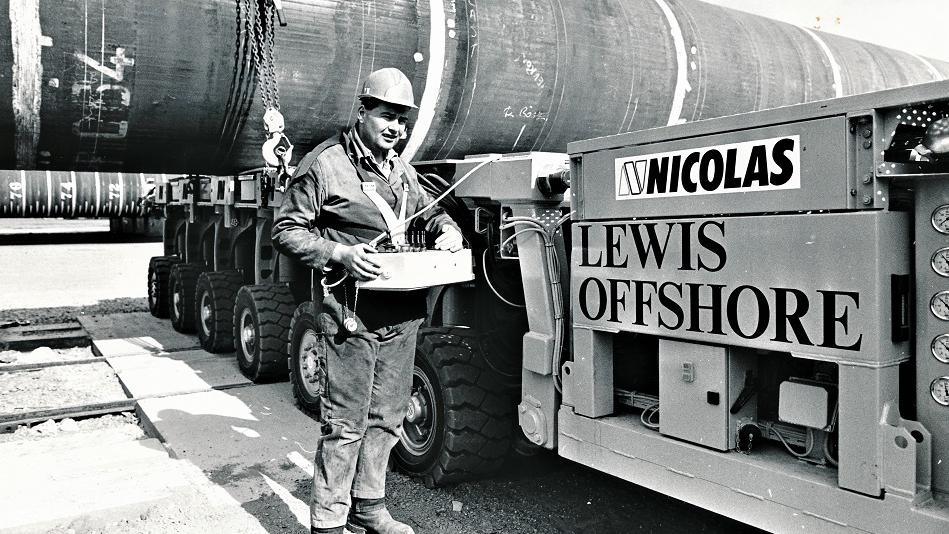Fears for Scottish jobs as Harland & Wolff faces administration

The giant cranes Samson and Goliath are a landmark of the Belfast skyline
- Published
Hundreds of Scottish workers face uncertainty as the Belfast-based shipbuilder Harland & Wolff goes into administration for the second time in five years.
Two of the company's four UK sites are in Scotland - at Arnish on the Isle of Lewis and Methil in Fife.
Unions GMB and Unite have previously warned that nearly 400 jobs in Scotland are vulnerable.
A buyer is being sought for the firm, and its four subsidiary businesses will continue trading in the meantime.
The Arnish fabrication yard - which recently won a major contract to build subsea structures for the oil industry - employs 150 people, making it one of the biggest employers on Lewis.
Another 200 workers are employed at the Methil site in Fife which is also focused on fabrication work for the energy sector.
Both yards were taken over by Harland & Wolff in 2021 after their former owner BiFab went bust.
Titanic shipyard to go into administration
- Published16 September 2024
What’s gone wrong at Harland & Wolff?
- Published16 September 2024
The administration process will only affect the Harland & Wolff holding company, allowing the firm's four UK yards to continue trading.
In a statement the new management said there are potential buyers for the sites in Belfast, Methil, Arnish and Appledore in Devon.
On Saturday, the firm’s executive chairman, Russell Downs, said the yards "together or separately have a credible future".
The GMB union said the yards were vital for the future of shipbuilding and the renewables sector.
Gary Cook, GMB Scotland Senior Organiser for Manufacturing, said: “This is a hammer blow to Scotland’s energy workforce and an all too familiar story.
“But it does not need to be the end of the yards at Arnish or Methil. They can and must be cornerstones of Scotland’s manufacturing foundations.
“Both the Scottish and UK Governments have made promises of a just transition. It’s now time for them to keep those promises and secure the future of these yards."

The Methil site in Fife is focused on fabrication work for the energy sector
Harland & Wolff, which built the Titanic and its sister ships for the White Star line, was once one of the biggest names in world shipbuilding.
At its height it employed 35,000 workers, and owned several shipyards on the Clyde.
But by 2019 when it last went into administration the workforce had dwindled to just 120.
Hopes of a revival grew in 2022 when it was part of a Spanish-led consortium which won a £1.6bn order for three new support ships for the Royal Navy.
The deal for the Fleet Solid Support ships was expected to lead to a major expansion of the Belfast shipyard and work would cascade to the other sites across the UK.
However, the firm has struggled to refinance expensive loans, and the UK government recently decided it was too risky to provide a £200m loan guarantee.
Restructuring expert Russell Downs has been running the company since chief executive John Wood took an immediate leave of absence in July.
Insolvency practitioners Teneo are being lined up to act as administrators and some "non-core" staff are being made redundant
Related topics
- Published1 July 2022
